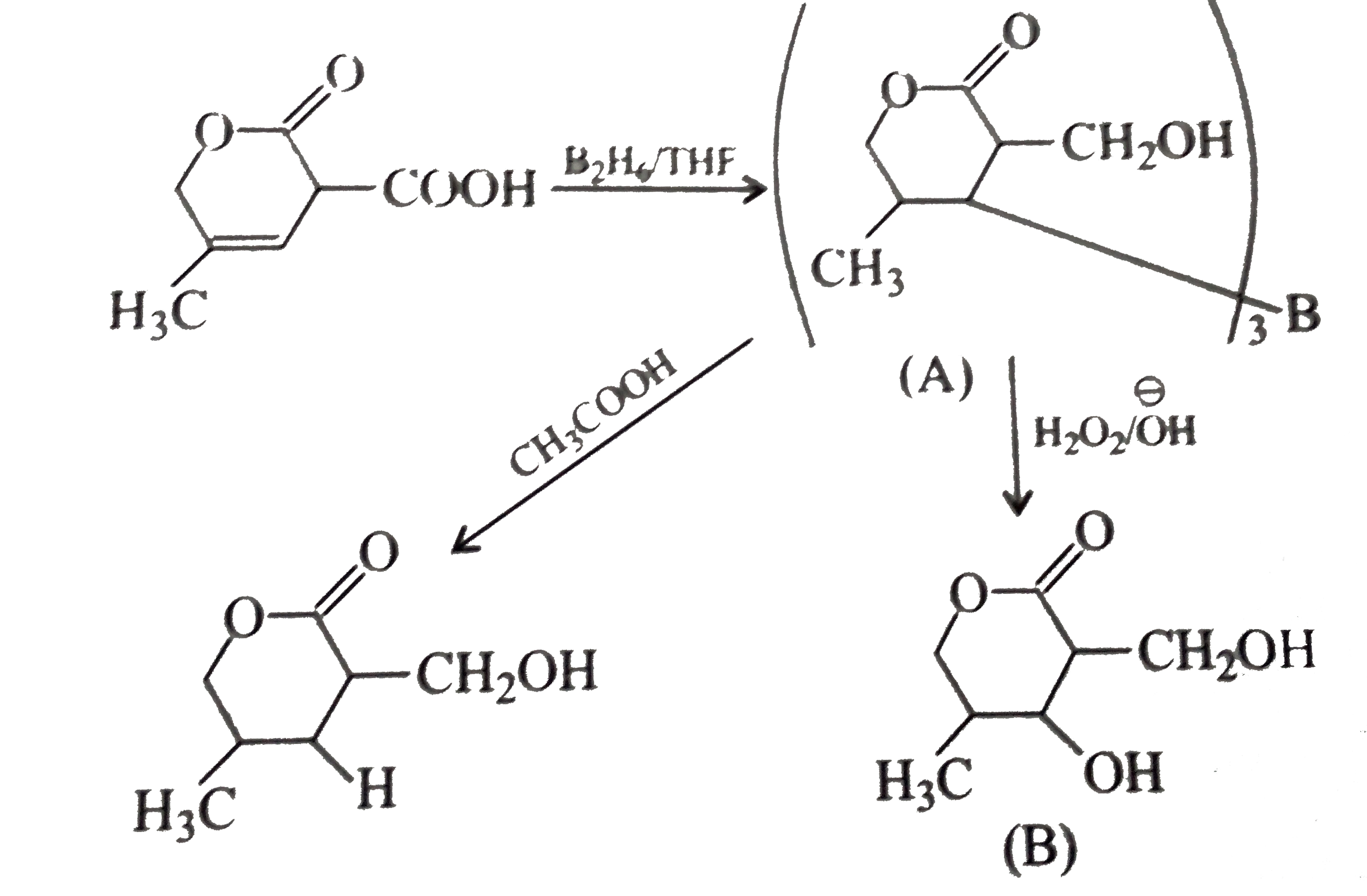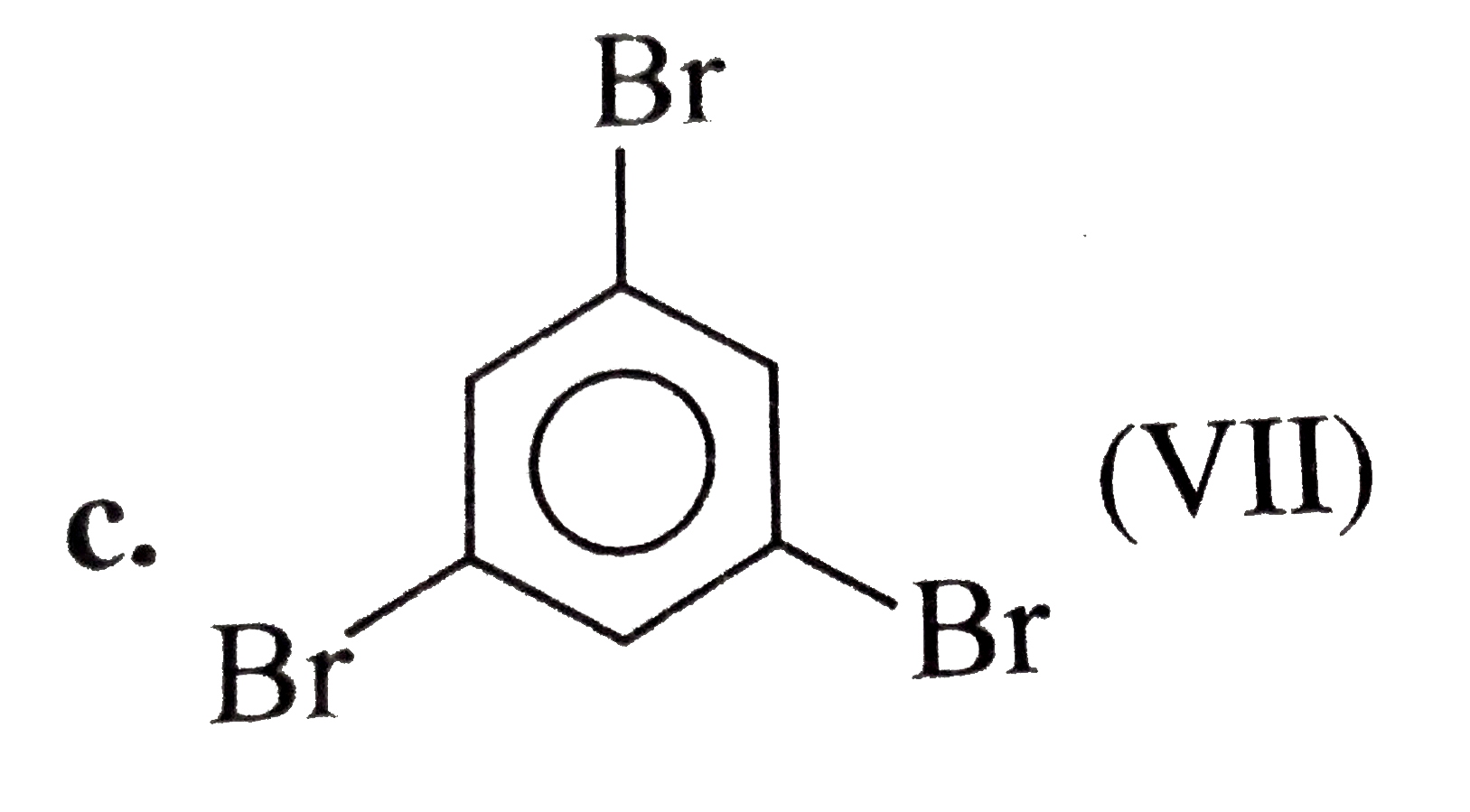
Three compounds I, II, and III are given.
(I)  (II)
(II) 
The compounds (A), (B) and (C ), respectively, are:
A
I, II, and III
B
I, III, and II
C
III, II, and I
D
III, I, and II
Text Solution
The correct Answer is:C
B2H6/THF besides reacting at (C=C) also selectively reduces only (−COOH) group to (−CH2OH) group in cyclic ester.

|
Topper's Solved these Questions
- ALCOHOL,PHENOL AND ETHERSBOOK - CENGAGE CHEMISTRYCHAPTER - ALCOHOL,PHENOL AND ETHERSEXERCISE - Exercises Assertion-Reasoning
10 Videos
- ALCOHOL,PHENOL AND ETHERSBOOK - CENGAGE CHEMISTRYCHAPTER - ALCOHOL,PHENOL AND ETHERSEXERCISE - Archives Single Correct
14 Videos
- ALCOHOL,PHENOL AND ETHERSBOOK - CENGAGE CHEMISTRYCHAPTER - ALCOHOL,PHENOL AND ETHERSEXERCISE - Exercises Multiple Correct
35 Videos
- ALIPHATIC AND AROMATIC ALDEHYDES AND KETONESBOOK - CENGAGE CHEMISTRYCHAPTER - ALIPHATIC AND AROMATIC ALDEHYDES AND KETONESEXERCISE - Archives Subjective
29 Videos
Similar Questions
Knowledge Check


I, II and III respectively areAparacetamol, aspirin and ibuprofenBparacetamol, diclofenac sodium and aspirinCaspirin, diclofenac sodium and paracetamolDibuprofen, paracetamol and aspirin(i)

(ii)
Compound(C)is:A(I)B(II)C(III)D(IV)(i)

(ii)
Compound(B)is:A B
B C
C D
D
i. Compound (A)

ii. Compound (B)
iii. Alkene (C) and alkane (D)
Compound (A) is:
View Solution(i)

(ii)
Compound(D)is:
View Solution
Arrange the compounds I,II and III decreasing order of their heats of combustion:
View Solutioni. Compound (A)

ii. Compound (B)
iii. Alkene (C) and alkane (D)
Compound (A) is:
View Solutioni. Compound (A)

ii. Compound (B)
iii. Alkene (C) and alkane (D)
Compound (A) is:
View Solution

